1 of 12
Downloaded 13 times
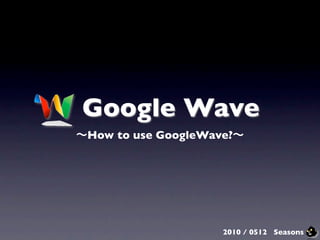
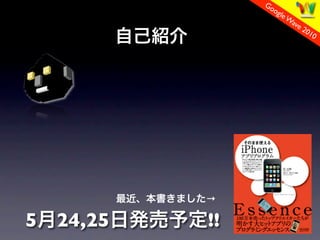
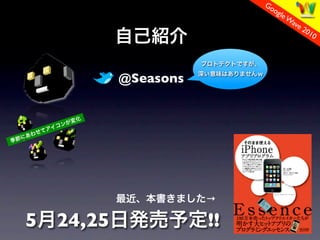
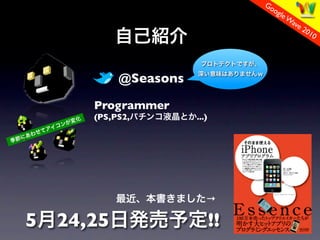
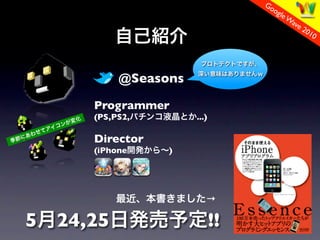
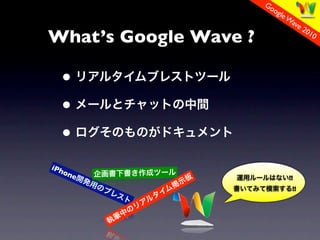
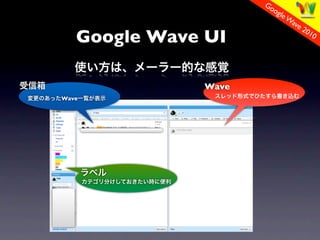
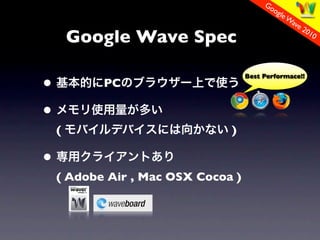
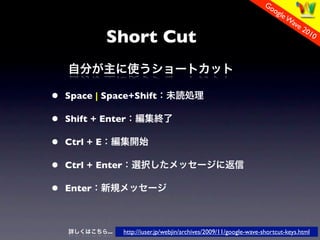


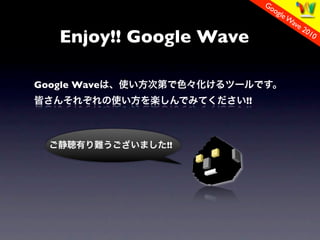
Ad
Recommended
Google sky ppt
Google sky pptkasmus
?
This document describes the life cycle of stars from their birth in stellar nurseries through their evolution as main sequence stars, red giants, and eventual deaths as planetary nebulae or supernovae, in 7 sections.Google Sky At GSFC
Google Sky At GSFCAlberto Conti
?
This document discusses Google Sky, a project to create an online astronomy platform using Google Earth technology. It would provide an interactive digital sky map as the base layer, onto which Hubble Space Telescope and other astronomical images and data could be accurately overlaid. Key challenges include handling the massive amounts of multi-wavelength astronomical data over time. The project aims to make vast databases of astronomical images, catalogs and other data easily accessible and searchable to the public.GoogleWave
GoogleWave Daniele Pauletto
?
The document discusses Google Wave and its potential uses for educational applications. Specifically:
- Google Wave is an open-source platform that allows for real-time communication and sharing of digital content like text, images, videos and maps.
- Within a WaveNetwork, users can participate in various online "teaching workshops" utilizing different educational robot applications related to subjects like language, research, math, geography, and communication.
- These robot applications provide functions like translation, adding Wikipedia links/definitions, inserting charts/maps, and more. Google Calendar and Docs can also be integrated for scheduling workshops and sharing documents.Rainbow technology doc
Rainbow technology docPrathyusha Shetty
?
This document describes the Rainbow storage technology which uses colored geometric shapes and dots printed on paper or plastic sheets to store digital data at very high densities. It can store files like text, images, audio and video clips in this "rainbow format". A specially developed scanner then decodes this back into the original digital formats. Key points:
1. It uses colors and shapes instead of binary 1s and 0s to store data on paper up to 2.7GB per square inch.
2. A scanner along with specialized software is used to read these prints and decode the data back into its original form.
3. The technology achieves much higher storage capacities than conventional printing by encoding data in aGsm jammer
Gsm jammerDr-Ahmed Elkorany
?
The document summarizes the design and implementation of a GSM mobile phone jammer. It was done by Ahmad Jisrawi and supervised by Dr. Nihad Dib at the Electrical Engineering Department of Jordan University of Science and Technology. The document discusses different mobile jamming techniques, the requirements for a GSM mobile jammer, and details the design including the RF section, IF section, and power supply. The overall purpose is to transmit signals on the same frequencies used by GSM systems to disable mobile phones in specific locations where ringing phones are disruptive, such as places of worship.The Trojan Horse (Computing)
The Trojan Horse (Computing)Angel Sophie
?
A Trojan horse is a destructive program that masquerades as a benign application. It does not replicate like viruses but can still cause damage. Trojan horses are classified based on how they breach systems and the damage they cause. The main types are remote access Trojans, data sending Trojans, destructive Trojans, proxy Trojans, FTP Trojans, security software disabler Trojans, and DoS attack Trojans. People can protect themselves by not opening emails from unknown senders, using antivirus software, and disconnecting from the internet if infected.Rainbow technology
Rainbow technologyAngad Kumar Singh
?
Angad Kumar Singh submitted a report on Rainbow Technology to partially fulfill the requirements for the IT681 seminar course. The report describes a new technology called Rainbow Storage that can store up to 450GB of digital data on a single sheet of paper by encoding the data in geometric shapes and color combinations. The encoded "Rainbow format" data can be printed on paper or plastic at high density and then scanned back into a digital format using specialized software and hardware. This breakthrough enables vastly more data to be stored much more cheaply and sustainably on paper than conventional storage media like CDs and DVDs.Google Wave Introduction
Google Wave IntroductionCraig Dickson
?
The document discusses Google Wave, a communication and collaboration tool that integrates instant messaging, wikis, social networks, media sharing, and blogging. It explains features such as the real-time playback capability, a rich API for developers to create extensions (gadgets and robots), and the differences between the two types of extensions. Additionally, it covers the embedding of waves into websites and the Google Wave federation protocol.Autonomic Computing: Vision or Reality - Presentation
Autonomic Computing: Vision or Reality - PresentationIvo Neskovic
?
- Autonomic computing is a discipline that aims to create self-managing computer systems inspired by biological systems like the human central nervous system.
- It aims to overcome the complexity and inability to effectively maintain current and emerging computer systems by making systems self-configuring, self-healing, self-optimizing and self-protecting.
- Early research projects are exploring techniques like recovery-oriented computing, self-securing storage, and swarm-based autonomous systems to achieve attributes of self-management in systems.Brain Computer Interface
Brain Computer Interfacedeaneal
?
This document provides an overview of brain-computer interfaces (BCIs). It discusses the history of BCIs, how they work, different types including invasive, partially invasive and non-invasive BCIs, applications such as assisting those with disabilities and human enhancement, examples of BCI projects, and challenges with the technology such as risks of invasive BCIs and need for training with non-invasive options. The document aims to cover introduction to BCIs, the role of neurons in generating signals, techniques like EEG and applications in areas like restoring vision and movement as well as augmenting cognition.Rainbow technology
Rainbow technology Angad Kumar Singh
?
The document describes a new technology called Rainbow Technology that can store large amounts of data on ordinary paper. It works by encoding files into colored geometric shapes and symbols, representing data in combinations of colors instead of binary. A single sheet of paper can potentially store up to 450 GB of data using this method. The technology offers significant advantages over traditional storage methods like CDs and DVDs by storing more data at a much lower cost and in an environmentally friendly biodegradable format. However, data stored this way may be at risk for fading or loss over time.Hologram technology
Hologram technologyJulio Herrera
?
Hologram technology creates virtual 3D images using projectors and was invented in 1948, though now used mainly in magic shows. The document discusses how holograms could revolutionize education, tourism, communication, music, and work by allowing 3D projections, and raises questions about using the technology to make movies or integrate it into daily life through shows and other applications.Google's Project Oxygen
Google's Project Oxygencheenuc
?
The document discusses Google's findings on the importance of effective management, highlighting research that shows a clear link between high-scoring managers and employee happiness, as well as reduced turnover. It outlines key behaviors of successful managers and addresses common pitfalls, emphasizing the value of training and assessments for managerial improvement. By November 2012, Google reported significant enhancements in managerial effectiveness, particularly among those who initially scored low, validating the assertion that good managers are essential for employee success.GoogleWave presentation from Opensource Days 2010
GoogleWave presentation from Opensource Days 2010Figaf.com
?
The document discusses Google Wave and its potential uses. It provides an agenda that covers why open sourcing Wave, use cases, and development options. Some key points are that Wave aims to solve many of email's problems by allowing real-time collaboration on documents and conversations, and that it offers opportunities for building applications through its extensibility features like gadgets, robots, and embeddings.Project jacquard
Project jacquardAbraham Kallivayalil
?
Project Jacquard is a new technology developed by Google that allows touch and gesture interactivity to be woven into textiles using standard industrial looms. This allows everyday objects like clothes and furniture to become interactive surfaces. The technology uses specialized conductive yarn that can be woven invisibly and connects to electronics. Developers will be able to connect apps and services to Jacquard-enabled clothes and textiles.Rainbow
Rainbowrosie76
?
The document discusses the rainbow, noting that it appears when it rains and the sun is shining. It lists the 7 colors of the rainbow as red, orange, yellow, green, blue, indigo, and violet.Rainbow Technology Seminar Report
Rainbow Technology Seminar ReportNagraaj Awanti
?
Rainbow Technology enables high-density data storage of up to 450 GB on paper by encoding digital data as colored shapes and symbols printed at high resolution. It uses principles where color combinations can be converted to and from numeric values to store and retrieve data. To read the data, the paper is scanned and special software decodes the color patterns back into the original digital files. This technique could revolutionize portable storage if it can reliably distinguish enough colors at a high enough resolution to achieve hundreds of gigabytes of storage capacity from a single sheet of paper.Cell phone jammer pdf
Cell phone jammer pdfManu M
?
This document describes a student project to build a cell phone jammer with a prescheduled time duration. It discusses using a PIC16F877A microcontroller to control a jammer circuit that can block GSM, DCS, and CDMA signals for a set period of time using real-time clock functionality. The project aims to allow users to select the cellular network and set the start and stop times for jamming through switches connected to the microcontroller.Rainbow storage-Technology By Satish
Rainbow storage-Technology By SatishSatish Kumar
?
Rainbow technology, developed in 2006, enables data storage of up to 450 GB on paper using color dots instead of traditional binary data. This innovative method compresses data into colored patterns and can store various file types while being environmentally friendly and cost-effective. Future applications may include 'rainbow cards' and large data banks, reducing reliance on conventional storage media.Mobile jammer
Mobile jammerharrynik
?
Mobile phone jammers are devices that prevent cellular phones from receiving or sending signals to cell towers by transmitting radio waves on the same frequencies. They can block cell signals within a range of a few feet to several kilometers depending on the model. While they have legitimate uses like in prisons and military zones, mobile jammers are illegal to operate in many places due to safety and privacy concerns.Mobile jammer
Mobile jammerShivam Jaiswal
?
This document provides an overview of mobile phone jammers, including: how they work by transmitting signals on the same frequencies used by cell phones to disrupt communication; the history of their development for law enforcement and military use; and the different types of jammer devices (types A through E). It also discusses applications of jammers like maintaining silence in libraries, preventing cell phone use in exams, and providing security in certain settings. "Rainbow Technology"
"Rainbow Technology"Umang Agrawal
?
Rainbow technology enables the storage of digital data on paper using color-coded encryption, achieving high-density storage up to 450 GB on a single A4 sheet. This innovative method utilizes geometric shapes to represent data patterns, allowing for a cost-effective and biodegradable alternative to traditional storage devices like DVDs and CDs. Despite concerns about data fading, the technology offers advantages in speed, confidentiality, and reduced e-waste.cell phone jammer report
cell phone jammer reportSameer Gupta
?
The document is a term paper on cell phone jammers submitted by Sameer Gupta. It discusses the history of cell phone jammers and how they work to disrupt communication between a cell phone and cell tower. It describes the components of a cell phone jammer including the power supply, circuitry, and antenna. It also covers jamming techniques, types of jammers, applications, legal issues, and alternatives to jamming. The paper was submitted to fulfill requirements for a course at Amity University Rajasthan under the guidance of instructor Sally Goyal.Cell phone jammer ppt
Cell phone jammer pptRonson Calvin Fernandes
?
The document discusses cell phone jammers, which create temporary "dead zones" that disrupt cell phone signals. It describes how jammers work by transmitting radio frequencies that interfere with communication between a phone and cell tower. Jammers can block signals in a 30-foot radius for smaller devices, and up to a mile for powerful law enforcement units. While jammers are illegal in most areas, the document outlines their applications for law and military use, as well as in schools and prisons to prevent cheating or illegal cell phone use.Google Wave
Google WaveMonika Adamczyk
?
This document provides an overview of Google Wave including:
- Wave allows for real-time collaboration by combining elements of email, chat and documents.
- Developers can build extensions like robots and gadgets that interact with waves using APIs.
- The Wave Embed API allows waves to be embedded in other web applications.Jini network technology
Jini network technologyKeerthi Thomas
?
This document provides an overview of Jini Network Technology. It discusses why Jini was created due to challenges with distributed computing. Jini allows devices to dynamically join and leave a network without configuration. It uses simple interfaces and protocols to enable spontaneous networks of software services. The key components of the Jini architecture are services, clients, and lookup services that help clients discover and utilize services. Jini provides benefits like resiliency to network changes and easy integration of new components.E-Governance of Bangladesh
E-Governance of BangladeshZafour
?
This document discusses e-governance and its implementation in Bangladesh. It defines e-governance as using modern technologies like the internet to improve government effectiveness, efficiency and service delivery. It describes the key components of e-governance as interactions between government and citizens (G2C), government and businesses (G2B), and within government (G2G). Challenges to e-governance in Bangladesh include limited infrastructure, costs, and lack of technical expertise. Successful implementation requires long-term planning, building partnerships, and addressing funding challenges.Gcs2014 0225 cocos2d-xjsb
Gcs2014 0225 cocos2d-xjsbKeisuke Hata
?
GCS2014で講演した cocos2d-x javascript bindingsについてのスライドとなります。
サンプルソースコード
https://github.com/Seasons7/Hitohudeapportable meeting
apportable meetingKeisuke Hata
?
apportable technology summary and best practices,
Story behind porting Sword & Sorcery to android.
More Related Content
Viewers also liked (20)
Autonomic Computing: Vision or Reality - Presentation
Autonomic Computing: Vision or Reality - PresentationIvo Neskovic
?
- Autonomic computing is a discipline that aims to create self-managing computer systems inspired by biological systems like the human central nervous system.
- It aims to overcome the complexity and inability to effectively maintain current and emerging computer systems by making systems self-configuring, self-healing, self-optimizing and self-protecting.
- Early research projects are exploring techniques like recovery-oriented computing, self-securing storage, and swarm-based autonomous systems to achieve attributes of self-management in systems.Brain Computer Interface
Brain Computer Interfacedeaneal
?
This document provides an overview of brain-computer interfaces (BCIs). It discusses the history of BCIs, how they work, different types including invasive, partially invasive and non-invasive BCIs, applications such as assisting those with disabilities and human enhancement, examples of BCI projects, and challenges with the technology such as risks of invasive BCIs and need for training with non-invasive options. The document aims to cover introduction to BCIs, the role of neurons in generating signals, techniques like EEG and applications in areas like restoring vision and movement as well as augmenting cognition.Rainbow technology
Rainbow technology Angad Kumar Singh
?
The document describes a new technology called Rainbow Technology that can store large amounts of data on ordinary paper. It works by encoding files into colored geometric shapes and symbols, representing data in combinations of colors instead of binary. A single sheet of paper can potentially store up to 450 GB of data using this method. The technology offers significant advantages over traditional storage methods like CDs and DVDs by storing more data at a much lower cost and in an environmentally friendly biodegradable format. However, data stored this way may be at risk for fading or loss over time.Hologram technology
Hologram technologyJulio Herrera
?
Hologram technology creates virtual 3D images using projectors and was invented in 1948, though now used mainly in magic shows. The document discusses how holograms could revolutionize education, tourism, communication, music, and work by allowing 3D projections, and raises questions about using the technology to make movies or integrate it into daily life through shows and other applications.Google's Project Oxygen
Google's Project Oxygencheenuc
?
The document discusses Google's findings on the importance of effective management, highlighting research that shows a clear link between high-scoring managers and employee happiness, as well as reduced turnover. It outlines key behaviors of successful managers and addresses common pitfalls, emphasizing the value of training and assessments for managerial improvement. By November 2012, Google reported significant enhancements in managerial effectiveness, particularly among those who initially scored low, validating the assertion that good managers are essential for employee success.GoogleWave presentation from Opensource Days 2010
GoogleWave presentation from Opensource Days 2010Figaf.com
?
The document discusses Google Wave and its potential uses. It provides an agenda that covers why open sourcing Wave, use cases, and development options. Some key points are that Wave aims to solve many of email's problems by allowing real-time collaboration on documents and conversations, and that it offers opportunities for building applications through its extensibility features like gadgets, robots, and embeddings.Project jacquard
Project jacquardAbraham Kallivayalil
?
Project Jacquard is a new technology developed by Google that allows touch and gesture interactivity to be woven into textiles using standard industrial looms. This allows everyday objects like clothes and furniture to become interactive surfaces. The technology uses specialized conductive yarn that can be woven invisibly and connects to electronics. Developers will be able to connect apps and services to Jacquard-enabled clothes and textiles.Rainbow
Rainbowrosie76
?
The document discusses the rainbow, noting that it appears when it rains and the sun is shining. It lists the 7 colors of the rainbow as red, orange, yellow, green, blue, indigo, and violet.Rainbow Technology Seminar Report
Rainbow Technology Seminar ReportNagraaj Awanti
?
Rainbow Technology enables high-density data storage of up to 450 GB on paper by encoding digital data as colored shapes and symbols printed at high resolution. It uses principles where color combinations can be converted to and from numeric values to store and retrieve data. To read the data, the paper is scanned and special software decodes the color patterns back into the original digital files. This technique could revolutionize portable storage if it can reliably distinguish enough colors at a high enough resolution to achieve hundreds of gigabytes of storage capacity from a single sheet of paper.Cell phone jammer pdf
Cell phone jammer pdfManu M
?
This document describes a student project to build a cell phone jammer with a prescheduled time duration. It discusses using a PIC16F877A microcontroller to control a jammer circuit that can block GSM, DCS, and CDMA signals for a set period of time using real-time clock functionality. The project aims to allow users to select the cellular network and set the start and stop times for jamming through switches connected to the microcontroller.Rainbow storage-Technology By Satish
Rainbow storage-Technology By SatishSatish Kumar
?
Rainbow technology, developed in 2006, enables data storage of up to 450 GB on paper using color dots instead of traditional binary data. This innovative method compresses data into colored patterns and can store various file types while being environmentally friendly and cost-effective. Future applications may include 'rainbow cards' and large data banks, reducing reliance on conventional storage media.Mobile jammer
Mobile jammerharrynik
?
Mobile phone jammers are devices that prevent cellular phones from receiving or sending signals to cell towers by transmitting radio waves on the same frequencies. They can block cell signals within a range of a few feet to several kilometers depending on the model. While they have legitimate uses like in prisons and military zones, mobile jammers are illegal to operate in many places due to safety and privacy concerns.Mobile jammer
Mobile jammerShivam Jaiswal
?
This document provides an overview of mobile phone jammers, including: how they work by transmitting signals on the same frequencies used by cell phones to disrupt communication; the history of their development for law enforcement and military use; and the different types of jammer devices (types A through E). It also discusses applications of jammers like maintaining silence in libraries, preventing cell phone use in exams, and providing security in certain settings. "Rainbow Technology"
"Rainbow Technology"Umang Agrawal
?
Rainbow technology enables the storage of digital data on paper using color-coded encryption, achieving high-density storage up to 450 GB on a single A4 sheet. This innovative method utilizes geometric shapes to represent data patterns, allowing for a cost-effective and biodegradable alternative to traditional storage devices like DVDs and CDs. Despite concerns about data fading, the technology offers advantages in speed, confidentiality, and reduced e-waste.cell phone jammer report
cell phone jammer reportSameer Gupta
?
The document is a term paper on cell phone jammers submitted by Sameer Gupta. It discusses the history of cell phone jammers and how they work to disrupt communication between a cell phone and cell tower. It describes the components of a cell phone jammer including the power supply, circuitry, and antenna. It also covers jamming techniques, types of jammers, applications, legal issues, and alternatives to jamming. The paper was submitted to fulfill requirements for a course at Amity University Rajasthan under the guidance of instructor Sally Goyal.Cell phone jammer ppt
Cell phone jammer pptRonson Calvin Fernandes
?
The document discusses cell phone jammers, which create temporary "dead zones" that disrupt cell phone signals. It describes how jammers work by transmitting radio frequencies that interfere with communication between a phone and cell tower. Jammers can block signals in a 30-foot radius for smaller devices, and up to a mile for powerful law enforcement units. While jammers are illegal in most areas, the document outlines their applications for law and military use, as well as in schools and prisons to prevent cheating or illegal cell phone use.Google Wave
Google WaveMonika Adamczyk
?
This document provides an overview of Google Wave including:
- Wave allows for real-time collaboration by combining elements of email, chat and documents.
- Developers can build extensions like robots and gadgets that interact with waves using APIs.
- The Wave Embed API allows waves to be embedded in other web applications.Jini network technology
Jini network technologyKeerthi Thomas
?
This document provides an overview of Jini Network Technology. It discusses why Jini was created due to challenges with distributed computing. Jini allows devices to dynamically join and leave a network without configuration. It uses simple interfaces and protocols to enable spontaneous networks of software services. The key components of the Jini architecture are services, clients, and lookup services that help clients discover and utilize services. Jini provides benefits like resiliency to network changes and easy integration of new components.E-Governance of Bangladesh
E-Governance of BangladeshZafour
?
This document discusses e-governance and its implementation in Bangladesh. It defines e-governance as using modern technologies like the internet to improve government effectiveness, efficiency and service delivery. It describes the key components of e-governance as interactions between government and citizens (G2C), government and businesses (G2B), and within government (G2G). Challenges to e-governance in Bangladesh include limited infrastructure, costs, and lack of technical expertise. Successful implementation requires long-term planning, building partnerships, and addressing funding challenges.More from Keisuke Hata (20)
Gcs2014 0225 cocos2d-xjsb
Gcs2014 0225 cocos2d-xjsbKeisuke Hata
?
GCS2014で講演した cocos2d-x javascript bindingsについてのスライドとなります。
サンプルソースコード
https://github.com/Seasons7/Hitohudeapportable meeting
apportable meetingKeisuke Hata
?
apportable technology summary and best practices,
Story behind porting Sword & Sorcery to android.
iOS app hacks
iOS app hacksKeisuke Hata
?
The document discusses methods for analyzing binaries and acquiring knowledge related to iOS app hacks. It includes a self-introduction of the author, who is involved with the cocos2d community and manages relevant online groups and blogs. The focus is on enhancing understanding of mobile app development and security.Photobook
PhotobookKeisuke Hata
?
This document appears to be a profile for an individual who works as a Mobile Technical Director at SQUARE-ENIX. They are a member of Kobold2D and have experience with ImpactJS, cocos2d, and Titanium Mobile game engines and frameworks. The profile includes their username of dddartwax.TiPhotobook_en
TiPhotobook_enKeisuke Hata
?
This document discusses Photobook, a photo application created using Titanium Mobile and pure JavaScript without modules. The key points are:
1. Photobook is an iOS photo application made exclusively with Titanium Mobile and JavaScript, without using any native modules.
2. The author plans to release a demo video on YouTube and make the source code for Photobook open source on GitHub.
3. They also intend to write a book about creating Photobook in Japanese and later translate it to English to help others build similar applications.CCSendMessages introduction
CCSendMessages introductionKeisuke Hata
?
The document shows how to create a sequence of actions in Cocos2D using CCCallFunc, CCCallFuncND, CCSendMessages, and CCSequence. The sequence runs an animationStart method after 1 second, then changes the opacity and scale of a sprite. First CCCallFunc and CCCallFuncND are used, then equivalent actions are shown using CCSendMessages to call methods on targets.Cocos2d Performance Tips
Cocos2d Performance TipsKeisuke Hata
?
1. Use nonatomic properties for primitive types like floats to avoid locking.
2. Use CCArray instead of NSMutableArray for better performance in cocos2d. Iterate arrays using CC_ARRAY_FOREACH.
3. Use index access instead of indexOfObject to improve performance of lookups in for loops.CCResourceAsyncLoader
CCResourceAsyncLoaderKeisuke Hata
?
The document loads 4 image resources asynchronously using a CCResourceAsyncLoader object. It initializes the loader with the number of resources, registers each resource filename to load, adds the loader as a child node to start loading, and implements a loadComplete method to check if all resources are finished loading by decrementing the loader's resourceCount property until it reaches 0.Impact beginngers guide_1.19
Impact beginngers guide_1.19Keisuke Hata
?
The document discusses HTML5 and JavaScript game development using the Impact game engine. It provides an overview of Impact's features like 2D canvas and audio support, an entity component system for defining game objects, and tools for publishing games to desktop and mobile. It also demonstrates how to create a custom player entity by extending the base Entity class and overriding init and update methods.Advanced cocos2d
Advanced cocos2dKeisuke Hata
?
The document discusses advanced techniques in cocos2d programming. It begins with an introduction to cocos2d and how to learn it. It then covers advanced techniques like replacing scenes, pushing and popping scenes, scene transitions, TexturePacker, PVRTC texture compression, extruding sprites, IMA-ADPCM audio, preprocessor macros for coordinates, using CCBumper for intro scenes, and asynchronous resource loading with CCResourceAsyncLoader. The document provides examples and explanations for implementing these techniques.Hello cocos2d ios
Hello cocos2d iosKeisuke Hata
?
Il documento sembra contenere una ripetizione della data 30 gennaio 2011. Non fornisce altre informazioni utili o dettagli aggiuntivi. ? quindi difficile trarre conclusioni significative.Ad
Google wave2010
- 1. Google Wave How to use GoogleWave? 2010 / 0512 Seasons
- 2. Go og le W ave 201 0 → 5 24,25 !!
- 3. Go og le W ave 201 0 @Seasons → 5 24,25 !!
- 4. Go og le W ave 201 0 @Seasons Programmer (PS,PS2, ...) → 5 24,25 !!
- 5. Go og le W ave 201 0 @Seasons Programmer (PS,PS2, ...) Director (iPhone ) → 5 24,25 !!
- 6. Go og le W ave 2 What’s Google Wave ? 01 0 ? ? ? iPh on e !! !!
- 7. Go og le W ave 2 Google Wave UI 01 0 Wave Wave
- 8. Go og le W ave 2 Google Wave Spec 01 0 ? Best Performace!! PC ? ( ) ? ( Adobe Air , Mac OSX Cocoa )
- 9. Go og le W ave 2 Short Cut 01 0 ? Space | Space+Shift ? Shift + Enter ? Ctrl + E ? Ctrl + Enter ? Enter ... http://iuser.jp/webjin/archives/2009/11/google-wave-shortcut-keys.html
- 10. Go og le W ave 2 New Feature 01 0 ... ? Wave ? Wave ? Wave !! ? Wave ( ...) ? ? etc....
- 11. Go og le W ave 2 Noti?cation 01 0 Google Wave Mac ?WaveBoard.app ?Unof?cial Google Wave Noti?er (github) http://github.com/hiroshi/Unof?cial-Google-Wave-Noti?er Windows ?Google Wave Noti?er (github) http://sourceforge.net/projects/wave-notify/?les/wave-notify-9.11.13.24/wave-notify-9.11.13.24.exe/download
- 12. Go og le W ave 2 Enjoy!! Google Wave 01 0 Google Wave !! !!
